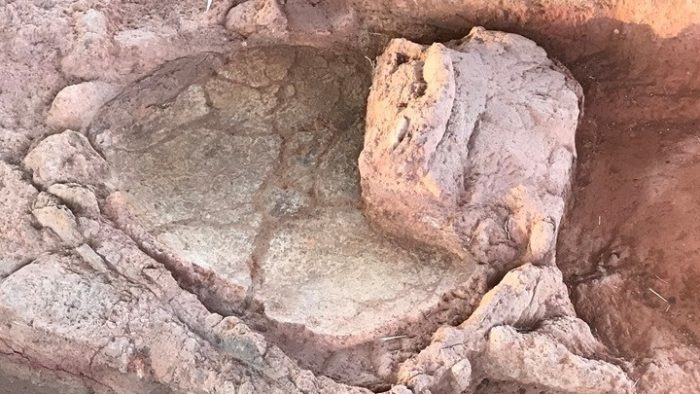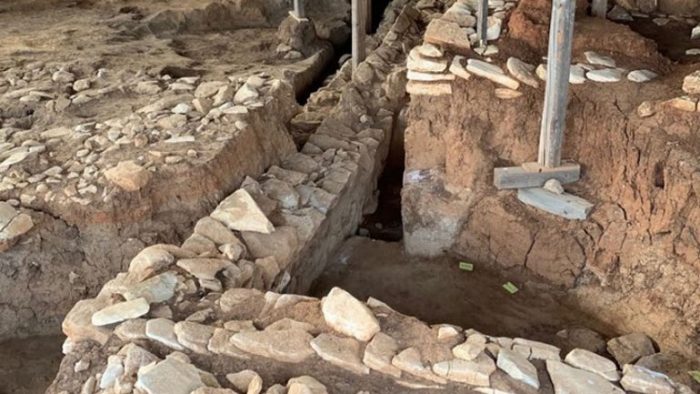Greece’s Ministry of Culture issued a statement on Friday afternoon, regarding recent discoveries in a neolithic settlement that is located in Phthiotis region and dates back to 6,000 – 5,800 BC.
The settlement, known to archaeologists as Koutroulou Magoula, from a local toponym, underwent its tenth season of excavation, with major discoveries having been made.
A large, middle-Neolithic building was discovered, with stone walls measuring a total of 9.5 meters in length and nearly 8.5 meters in width.
This makes the building one of the largest of this period to be found in Greece.
The archaeologists also found that the monumental building was supported by a massive external buttress.
Its function remains unclear, but preliminary results indicate that it has been used for a long period of time and it underwent several rebuilding efforts and modifications.
For the archaeologists, it is also clear that at certain periods, it seems to have been shared with domestic animals.
Another significant finding was another building complex, which seems to have been heavily burnt. Closed pottery kilns were also found near the edge of the settlement.
One of the kilns preserves extremely well its plastered floor, parts of its plastered walls and dome, and other architectural features and it was built on a coarsely plastered platform.
“This is an extremely important discovery, and an indication of the technological sophistication of the Neolithic inhabitants of the site,” Dr. Nina Kyparissi-Apostolica noted, the honorary Ephor at the Ephorate of Palaeoanthropology and Speleology, and co-director of the excavation with professor Yannis Hamilakis of the US Brown University.
Excavations this year proved beyond any doubt that the settlement in the Neolithic site was surrounded by perimeter ditches, large, seemingly communal works with multiple social, symbolic and practical functions.
The natural bedrock had been cut by people in the Neolithic site itself, to form steps in order to facilitate digging, but also enable its continuous use for collecting water and possibly clay.
This season’s findings included many clay figurines and house models, adding to the already impressive and diverse collection of figurines from the site which numbers more than 400 to date.
Extensive ethnographic research was also carried out during the tenth season of excavations, which concluded with a site-specific theatrical performance titled “Woman” and staged next to the trenches. It was attended by more than 200 people and the theme merged archaeological narratives with contemporary discourses on gender relations.
The Neolithic site measures 3.7 hectares and rises around 6.6 meters from the surrounding plain.
This year, the excavation was carried out under the auspices of the ”British School at Athens” Archaeological Institute, and the 2019 field season included students and archaeologists from Greece, the US, the UK, the Netherlands, and Taiwan.

(With information from AMNA)












